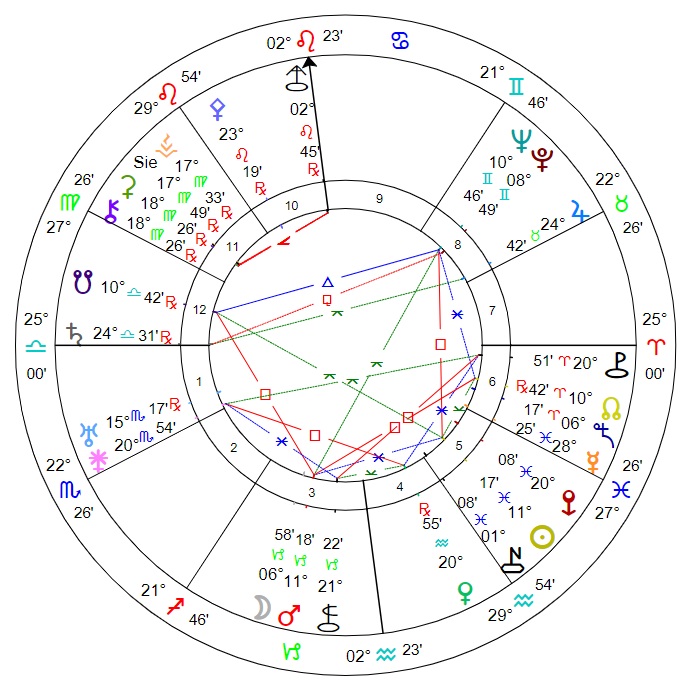Basics
Class: C-type asteroid
Location: Outer main belt
Orbit length (approx): 4.93 years
Discovered: 1st March 1894, 21:05 UTC, from Heidelberg, Germany, by Max Wolf
Notes: Very large asteroid with a mean radius of about 165km.
Events at time of discovery:
- February 25 – Birth of Meher Baba, Indian Avatar of the Age
- February 28 – Birth of Ben Hecht, American playwright, film writer
- March 2 – William Gladstone resigns as British Prime Minister.
Naming information
Name origin: Siegen is a university city in the Arnsberg region of North Rhine-Westphalia, Germany. It lies in the basin of the river Sieg, and is surrounded by mountains, which where uninhabited are covered in coppice. Siegen lies on the German-Dutch holiday road called the Orange Route, joining towns, cities and regions associated with the House of Orange. The first documentary mention of the city dates from 1079 CE. It contains two stately homes, the Oberes Schloss (containing a collection of paintings by Rubens) and the Unteres Schloss, which is now a state authority building.
 |
| The upper part of Siegen city. Photo by Bob Ionescu. |
Astrological data
Discovery degree: 17+ Virgo
Discovery Sabian: A Ouija Board
Discovery nodal signature: Virgo–Pisces
Estimated orbital resonances: Venus 1:8, Ceres 13:14, Jupiter 12:5, Saturn 6:1, Uranus 17:1
Discovery chart details: Last quarter phase with Saturn rising, Pholus descending and Asbolus on the MC. Venus was retrograde. Siegena was conjunct Ceres-Vesta-Chiron, with all four semi-square Asbolus. Moon square Sedna; Sun closely sextile Mars, square Neptune and semi-sextile the North Node. Mars square and Neptune sextile the North Node. Venus square Juno, semi-square Sedna, semi-sextile Eris and Chariklo, and sextile Pholus. Mars quincunx Neptune; Jupiter quincunx Saturn; Saturn sesquiquadrate Pluto. Juno trine Eris and sextile Chariklo.
Summary
May relate to the joining of different realms, ideas or ways of being; possibly at a fundamental level, where the act of fusion produces a unique form. In another sense, Siegena could highlight commonalities among varied beings, especially humans.
 |
| Discovery chart for (386) Siegena: 1st March 1894, 21:05 UTC, Heidelberg, Germany. |
